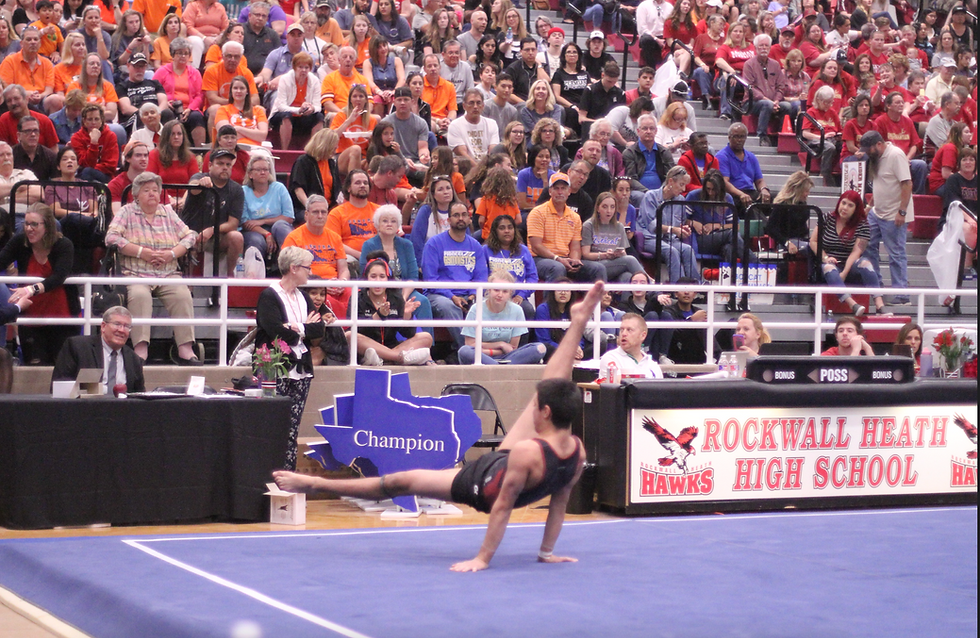Starting a High School Gymnastics Program in Texas
- omarloya
- Jul 23
- 4 min read
Updated: Jul 30
Starting a high school gymnastics program in Texas can be an exciting and rewarding venture. Gymnastics is not just a sport; it is a discipline that teaches strength, flexibility, and perseverance. With the right planning and resources, you can create a program that not only develops athletes but also fosters a sense of community and school spirit.
In this blog post, we will explore the steps to establish a successful gymnastics program at your high school. From understanding the requirements to building a supportive environment, we will cover everything you need to know to get started.
Understanding the Basics
Before diving into the logistics, it is essential to understand what a gymnastics program entails. Gymnastics includes various disciplines such as artistic gymnastics, rhythmic gymnastics, and trampoline. Each discipline has its own set of skills and requirements.
Key Components of a Gymnastics Program
Coaching Staff: Qualified coaches are crucial for teaching skills and ensuring safety.
Facilities: A suitable gym with the necessary equipment is essential for training.
Funding: Consider how you will finance the program, whether through school funds, fundraising, or sponsorships.
Student Interest: Gauge interest among students to ensure there are enough participants.
Researching Requirements
Before you can start a gymnastics program, you need to research the requirements set by the Texas University Interscholastic League (UIL). UIL governs high school sports in Texas and has specific guidelines for starting new programs.
Eligibility: Understand the eligibility requirements for student-athletes.
Safety Regulations: Familiarize yourself with safety regulations to protect your athletes.
Competition Rules: Learn about the competition rules and formats for gymnastics events.
Building a Supportive Environment
Creating a supportive environment is vital for the success of your gymnastics program. This includes not only the athletes but also parents, school administration, and the community.
Engaging Parents and Community
Information Sessions: Host meetings to inform parents about the program and its benefits.
Volunteer Opportunities: Encourage parents to get involved, whether through fundraising or helping at events.
Community Support: Reach out to local businesses for sponsorships or donations to help fund the program.
Collaborating with School Administration
Present Your Plan: Prepare a detailed proposal for school administrators outlining the benefits of the program.
Address Concerns: Be ready to address any concerns regarding funding, safety, or logistics.
Seek Approval: Obtain the necessary approvals to move forward with your program.
Recruiting Athletes
Once you have the support of the school and community, it is time to recruit athletes.
Promoting the Program
Flyers and Announcements: Use school announcements and flyers to promote the program.
Demonstrations: Organize a demonstration or workshop to showcase gymnastics skills and attract interest.
Social Media: Utilize social media platforms to reach a broader audience and engage potential athletes.
Hosting Tryouts
Set a Date: Schedule tryouts to assess the skills and interest of potential athletes.
Skill Assessment: Evaluate athletes based on their skills, commitment, and attitude.
Team Selection: Select a diverse group of athletes to create a well-rounded team.
Training and Development
With your team in place, it is time to focus on training and development.
Creating a Training Schedule
Regular Practices: Establish a consistent practice schedule that accommodates athletes' other commitments.
Skill Development: Focus on developing fundamental skills before advancing to more complex routines.
Conditioning: Incorporate strength and conditioning exercises to enhance performance and prevent injuries.
Coaching Techniques
Positive Reinforcement: Use positive reinforcement to motivate athletes and build confidence.
Individual Attention: Provide individual feedback to help each athlete improve.
Team Building: Foster a sense of teamwork through group activities and bonding exercises.
Competing and Showcasing Talent
Competing is an essential aspect of any gymnastics program. It provides athletes with the opportunity to showcase their skills and gain experience.
Finding Competitions
Local Meets: Start by participating in local competitions to gain experience.
UIL Events: As your program grows, consider entering UIL-sanctioned events.
Traveling Competitions: Explore opportunities for traveling competitions to broaden your athletes' experiences.
Preparing for Competitions
Routine Practice: Ensure athletes practice their routines thoroughly before competitions.
Mental Preparation: Teach athletes mental strategies to handle competition pressure.
Team Support: Encourage team support during competitions to boost morale.
Celebrating Achievements
Celebrating achievements is crucial for maintaining enthusiasm and motivation within your gymnastics program.
Recognizing Individual and Team Success
Awards and Certificates: Provide awards or certificates for achievements, both big and small.
End-of-Season Banquet: Host a banquet to celebrate the season and recognize individual contributions.
Highlight Reels: Create highlight reels of competitions to showcase athletes' progress and achievements.
Overcoming Challenges
Starting a gymnastics program may come with its challenges. However, with determination and creativity, you can overcome these obstacles.
Common Challenges
Funding Issues: If funding is a concern, consider creative fundraising ideas such as bake sales or car washes.
Limited Facilities: If your school lacks adequate facilities, explore partnerships with local gyms or community centers.
Low Participation: If interest is low, consider offering introductory classes to attract new athletes.
Strategies for Success
Stay Flexible: Be open to adjusting your plans based on feedback and circumstances.
Build a Network: Connect with other gymnastics programs for support and advice.
Keep Communication Open: Maintain open lines of communication with athletes, parents, and school administration.
The Road Ahead
Starting a high school gymnastics program in Texas is a journey filled with opportunities for growth and development.
By following these steps, you can create a program that not only teaches gymnastics skills but also builds character and community.
As you embark on this exciting adventure, remember that the most important aspect is to foster a love for the sport and create lasting memories for your athletes.
With dedication and passion, your gymnastics program can thrive and inspire future generations of gymnasts.



Comments